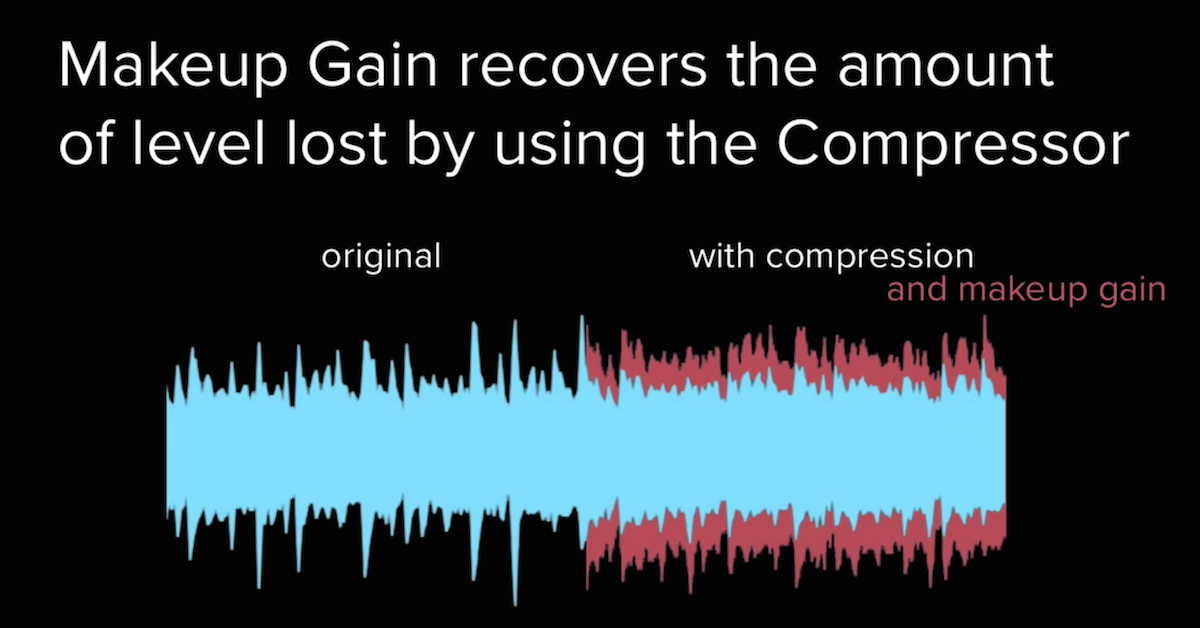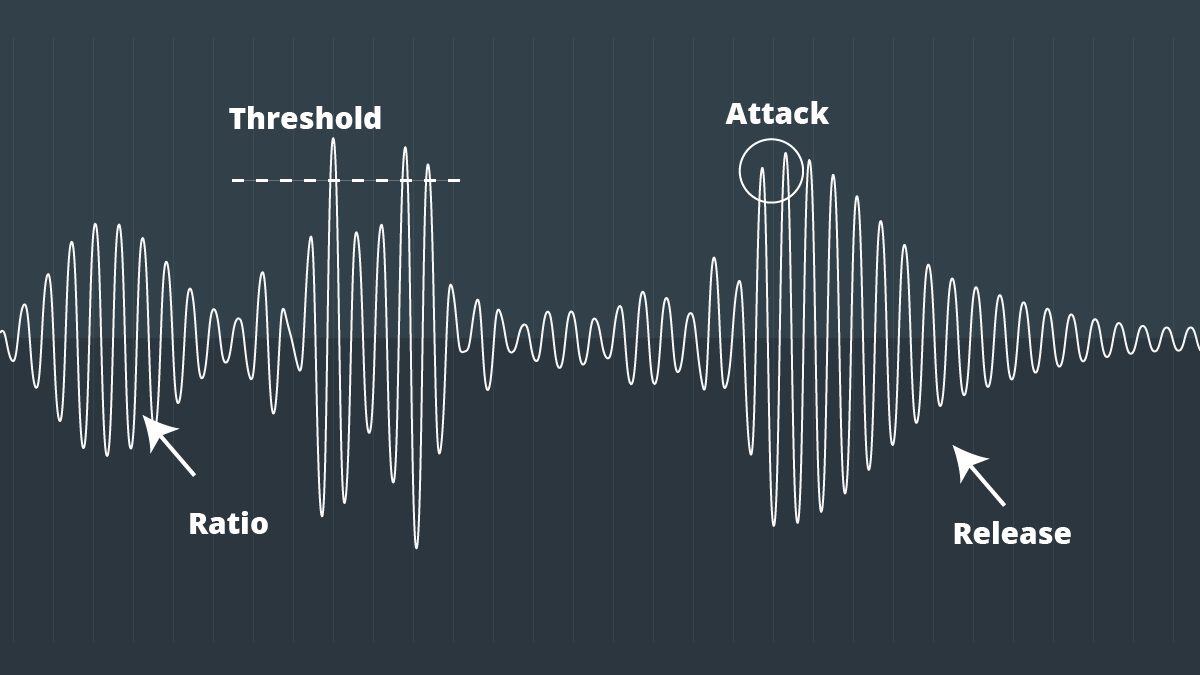Compressor makeup gain is a parameter on compressors that allows you to increase the signal level after it has been compressed, bringing it back to its original level. This helps to restore the dynamics of the audio signal and compensate for the volume reduction caused by compression.
Compressor makeup gain is an essential tool in audio processing, particularly in recording, mixing, and mastering. By carefully adjusting the makeup gain, you can ensure that the compressed signal retains its original impact and energy. Understanding how to use makeup gain effectively can greatly improve the overall quality and clarity of your audio productions.
Whether you are a professional audio engineer or an aspiring musician, mastering the concept of compressor makeup gain is crucial for achieving professional-sounding results in your recordings.

Credit: theproaudiofiles.com
Introduction To Compressor Makeup Gain
When it comes to understanding audio compression, one of the essential concepts to grasp is compressor makeup gain. This feature plays a crucial role in shaping the sound and ensuring the desired balance in audio dynamics. In this section, we will explore the significance and function of compressor makeup gain to gain a deep understanding of its role in audio processing.
What Is Compressor Makeup Gain?
Compressor makeup gain is the level control within a compressor that is used to boost the overall signal after it has been compressed. Essentially, it compensates for the reduction in volume that occurs when a compressor effectively limits the dynamic range of an audio signal. This process helps to restore the original signal’s amplitude, bringing it back to a desired level of loudness and ensuring consistency in the audio’s dynamics.
Importance Of Makeup Gain In Audio Compression
Makeup gain is a critical component in audio compression as it enables the user to correct the level reduction caused by the compressor’s action. By applying appropriate makeup gain, the original signal’s dynamics can be preserved, allowing for a more controlled and balanced audio output. Without makeup gain, the compressed signal may sound quieter or lack the desired impact, affecting the overall quality of the audio production.
Understanding Audio Compression
How Does Audio Compression Work?
Audio compression is a key element in the recording, mixing, and mastering process. It involves reducing the dynamic range of an audio signal, effectively controlling the volume and making the overall sound more consistent. This is achieved by attenuating the loudest parts of the signal while boosting the quieter elements, allowing for a more balanced and controlled sound. Compressor makeup gain comes into play as it restores the volume lost during the compression process.
Key Terms In Audio Compression
- Limiter
- Threshold
- Ratio
- Attack
- Release
These are some of the key terms associated with audio compression. Understanding these terms is crucial for effectively using compressor makeup gain and other compression tools in audio production.
Role Of Makeup Gain
The makeup gain in a compressor plays a crucial role in adjusting the overall volume of a sound signal, allowing for improved dynamic control and balanced audio output. It is a vital tool for achieving desired sound levels in various audio applications.
What Is Makeup Gain And Why Is It Necessary?
Makeup gain, in the context of audio compression, refers to the process of increasing the level of a signal after it has been compressed. It is an essential step in the dynamics processing chain and plays a crucial role in maintaining a balanced and even sound.
When a signal is compressed, its dynamic range is reduced, meaning that the difference between the loudest and softest parts of the signal is reduced. While compression is often used to control the peaks and make the audio more consistent, it can also result in a loss of volume and overall level. This is where makeup gain comes in.
Makeup gain is used to compensate for the reduction in level caused by compression, bringing the compressed signal back to its original or desired level. By boosting the level of the compressed signal, makeup gain helps to restore the lost volume and ensure that the audio remains audible and balanced.
Balancing Dynamics With Makeup Gain, Ensuring Each Heading Adheres To Html Syntax.
One of the primary functions of makeup gain is to balance the dynamics of a signal. When compressing audio, the dynamic range is reduced, which can result in certain elements of the sound becoming too soft or too loud in the mix. By applying makeup gain, the dynamics can be adjusted, bringing the quieter elements up and reducing the gain of the louder sections.
With the use of makeup gain, the dynamics of a composition can be controlled and shaped to ensure that all elements are heard clearly and that nothing gets lost in the mix. It allows for a more polished and professional sound by providing a consistent and even level throughout the track.
Furthermore, makeup gain is not only important for balancing dynamics within a mix but also for maintaining a consistent level across various tracks and recordings. When multiple recordings or tracks are combined, there may be differences in levels due to varying recording conditions or equipment. Makeup gain helps to unify the levels and ensure a smooth and cohesive listening experience.

Credit: soundoracle.net
Techniques For Applying Makeup Gain
When it comes to mastering audio, understanding how to apply makeup gain correctly is crucial for achieving optimal sound quality.
Setting The Makeup Gain Correctly
Balance levels without distortion; adjust makeup gain to restore original dynamics.
Using Makeup Gain Creatively
- Enhance soft passages by slightly increasing makeup gain.
- Experiment with makeup gain to bring out hidden nuances in the mix.
- Don’t overdo makeup gain; keep it subtle for a natural sound.
Tips For Transforming Your Sound With Makeup Gain
Tips for Transforming Your Sound with Makeup Gain
Using Makeup Gain To Shape The Character Of Your Audio
Adjust makeup gain to enhance audio dynamics and clarity.
Experiment with varying levels for different sound effects.
- Increase makeup gain to bring out softer details.
- Reduce makeup gain to maintain natural sound balance.
Avoiding Common Mistakes In Makeup Gain Adjustment
Monitor distortion levels when applying makeup gain.
Ensure makeup gain doesn’t overpower the original audio.
- Start with small adjustments and listen carefully.
- Use metering tools to avoid clipping or distortion.

Credit: www.soundgym.co
Frequently Asked Questions Of Compressor Makeup Gain
What Is Compressor Makeup Gain?
Compressor makeup gain is the process of boosting the quieter parts of audio signals after compression to maintain overall balance and clarity. It helps in bringing up the level of the compressed audio without introducing distortion or unwanted artifacts.
Why Is Makeup Gain Important In Compression?
Makeup gain is crucial in compression as it allows for proper level matching and ensures that the compressed audio signal retains its original dynamics and perceived loudness. It helps in achieving a consistent and professional sound output.
How Does Makeup Gain Affect Audio Quality?
Makeup gain impacts audio quality by restoring the signal level post-compression, enhancing the overall clarity and balance of the audio. Properly set makeup gain can prevent the compressed audio from sounding too soft or uneven, resulting in a cleaner and more polished sound.
When Should Makeup Gain Be Adjusted?
Makeup gain should be adjusted after applying compression to ensure that the output signal reaches the desired level without clipping or distortion. It is typically adjusted based on the amount of compression applied and the desired loudness of the audio.
Conclusion
Compressor makeup gain is a crucial tool in audio production, allowing for precise control over dynamics and ensuring a well-balanced mix. By understanding the purpose and function of makeup gain, you can optimize the performance of your compressor and elevate your audio projects to new heights.
Remember to experiment with different settings and techniques to find your desired sound. With practice and a keen ear, you’ll be able to achieve professional-level results. Happy mixing!